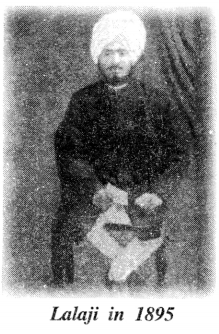The Biography of Famous Personalities of India will tell you about the controversies, the dark sides of a person that you may have never heard of.
Introduction, Family and Education of Lala Lajapat Rai
Introduction
“Every blow on our bodies is like a nail driven into the coffin of British imperialism.”

Lala Lajpat Rai was an Indian politician who is chiefly remembered as a great leader in the Indian fight for freedom from the British Raj. He was popularly known as Punjab Kesari.
Lala Lajpat Rai was born on January 28, 1865 in village Dhudike, in the present day Moga district of Punjab. He was the eldest son of Munshi Radha Kishan Azad and Gulab Devi. His father was an Urdu Teacher. His religious mother inculcated strong moral values in him.
Lala Lajpat Rai joined the Government College at Lahore in 1880 to study Law. While in college, he came in contact with patriots and future freedom fighters like Lala Hans Raj and Pandit Guru Dutt. The three became fast friends and joined the Arya Samaj founded by Swami Dayanand Saraswati. He passed his Law Examination in Second Division from the Government College in 1885.
Lalaji was proud of the ancient values and rich heritage of India. The session of the Indian National Congress at Allahabad in December 1888 marked the beginning of his political career. At the next session of Congress at Mumbai in 1889, he spoke in support of Tilak’s amendment. Bipin Chandra Pal and Gokhale too supported Tilak. Though his name was linked with Tilak and Pal as the leaders of the extremists, he always made efforts to reconcile the differing elements.
The year 1905 was important for the emergence of a new leadership in the Indian National Congress of ‘Lal- Bal-Pal’, as they were popularly known. The partition of Bengal in 1905 aroused their robust nationalism. The repressive measures of the government against the growing nationalist movement inspired them to infuse national pride and self-respect among people. Lalaji emerged as the undisputed leader of this new spirit.
He left for Britain in April 1914 for this purpose. At this time, the First World War broke out and he was unable to return to India. He then went to USA to galvanise support for India. He founded the Indian Home Rule League Society of America and wrote a book called, Young India. The book severely indicted British rule in India and was banned in Britain and India even before it was published. He was able to return to India in 1920 after the end of World War.
Lalaji presided over the first session of the All India Trade Union Congress in 1920. He also went to Geneva to attend the Eighth International Labour Conference in 1926 as a representative of Indian labour. He had an opportunity to watch the labour movement in USA and England where he was required to prolong his stay for political reasons.
He was not only a good orator but also a prolific and versatile writer. His journal, Arya Gazette concentrated mainly on the subjects related to the Arya Samaj. Vande Mataram and People, full of fiery essays mirrored the unrest and zeal in him to free his country from the clutches of the foreign rule. He founded the Servants of the People Society, which worked for the freedom movement as well as for social reform movement in the country.
In 1928, the British Government decided to send the Simon Commission to India to discuss constitutional reforms. The Commission had no Indian member. This greatly angered Indians. In 1929, when the Commission came to India, there were protests all over India. Lala Lajpat Rai himself led one such procession against the Simon Commission. While the procession was peaceful, the British Police brutally lathicharged the procession. Lala Lajpat Rai received severe injuries and died on Novemberl7, 1928.
Family Background
Lala Lajpat Rai, popularly known as ‘Punjab Kesari’, was bom on 28 January 1865 at village Dhundhike in Jagraon tehsil of the Ludhiana (now Moga) district, Punjab, in a Hindu Aggarwal family. His mother, Gulab Devi, came from a Sikh family. Lajpat Rai’s family was far from affluent; his grandfather, Lala Rala Ram, was a shopkeeper, and his father, Munshi Radha Kishan Azad, an Urdu teacher in a Government school. His father was a great scholar of Persian and Urdu while his mother was a strict religious lady and inculcated in her children strong morals values.
Lajpat Rai had three brothers, Dhanpat Rai, Ranpat Rai and Dalpat Rai.
Lalaji was brought up in a family background that allowed freedom of having different faiths and beliefs. His grandfather was a Svetambara Jain while his father had great respect for Islam, and he even fasted and prayed like Muslims. This all had a lasting effect on Rai’s attitude towards religions other than Hinduism.
Education
Lajpat Rai studied first at the village school and then at the Mission High Schools at Ludhiana and Ambala. He passed the Matriculation examination at fifteen and joined the Government College at Lahore in 1880 for his Intermediate and to study Law. While in college he came in contact with patriots and future freedom fighters like Lala Hans Raj and Pandit Guru Dutt Vidhyarti. The three became fast friends and joined the Arya Samaj founded by Maharishi Swami Dayanand Saraswati.

In 1884 his father was transferred to Rohtak and Lala Lajpat Rai came along.
He passed his Vakil ship (Law) Examination in Second Division from Government College in 1885 and started his legal practice in Jagraon and later in Hissar.